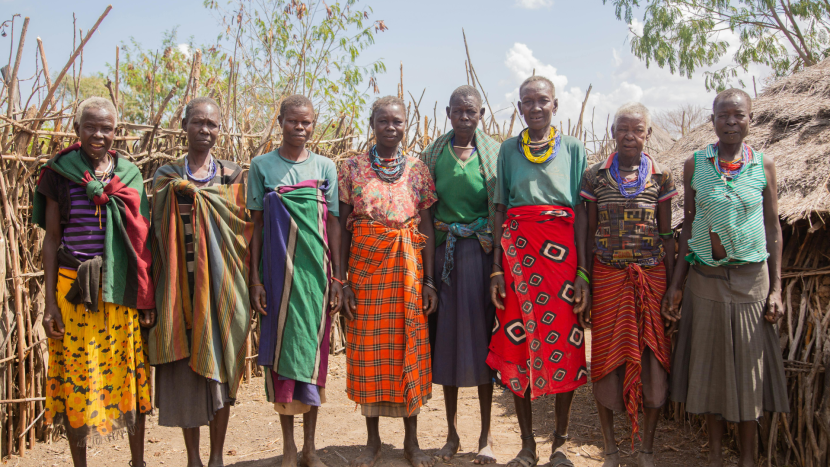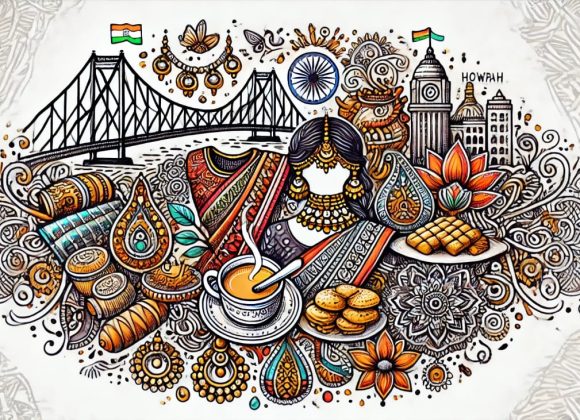Nestled in the northeastern part of India, Meghalaya is not just famous for its picturesque landscapes and abundant rainfall but also for its distinct social structure — a matrilineal society, one of the few of its kind in the world. In a country largely shaped by patriarchal norms, Meghalaya stands out with its Khasi, Garo, and Jaintia tribes, where lineage and inheritance are passed down through the female line.
But while this system appears to offer a gender-progressive lens, it is more nuanced than it seems. As Meghalaya modernizes and opens up to global influences, its traditional matrilineal customs are evolving, and so is the role of women in the society.
Traditions That Define Meghalaya’s Matrilineal Culture
Meghalaya’s matrilineal structure is more than a social system — it is a way of life deeply rooted in the identity of its indigenous tribes, particularly the Khasis, Garos, and Jaintias. These communities have preserved their unique customs for generations, setting them apart from the predominantly patriarchal cultures across India.
Who Are the Khasis, Garos and Jaintias?
The Khasis are one of the largest tribal communities in Meghalaya and primarily inhabit the Khasi Hills region, including the state capital, Shillong. Known for their rich oral traditions, love for music, and deep spiritual connection to nature, the Khasis follow a matrilineal system where family name, property, and lineage are traced through the mother.
The Garos, another major tribe of Meghalaya, are mostly settled in the Garo Hills in western Meghalaya. They are known for their warrior history, vibrant festivals, and community-focused lifestyle. The Garo society is also matrilineal, with property and clan identity passed through the female line, although men traditionally hold authority in village governance and clan decisions.
The Jaintias, also known as the Pnars, reside mostly in the Jaintia Hills in eastern Meghalaya. Closely related to the Khasis in language and culture, the Jaintias follow a similar matrilineal system, with inheritance passing to daughters and family names traced through the mother’s clan. They are known for their rich cultural festivals and historic monarchy, which existed until the British annexation.
Let’s explore the central traditions that define this distinctive social fabric:
1. Inheritance Through the Youngest Daughter (Ka Khadduh)
In both Khasi and Jaintia families, ancestral property is passed on to the youngest daughter, called Ka Khadduh. She holds the responsibility of caring for elderly parents and preserving family customs and sacred rituals. This ensures the continuity of the maternal household and the stability of the clan.
2. Clan and Lineage Are Matrilineal
Among the Khasis, Garos, and Jaintias, children inherit the mother’s clan name and identity. This is central to social organization, especially in marriage customs — marriage within the same clan (kur) is strictly prohibited, as it is considered incestuous in traditional law.
3. Matrilocal Residence
After marriage, men move into their wife’s maternal home, a practice called matrilocality. This arrangement ensures that family property and lineage remain within the mother’s household and keeps the extended family network intact.
4. Role of the Maternal Uncle (U Kñi / Mama / Mama)
Despite women being the inheritors, maternal uncles (U Kñi in Khasi) play significant roles in family affairs. They often act as guardians of tradition, making decisions related to clan property, rituals, and disputes. Among the Garos, the maternal uncle also has a guiding role, especially in ceremonies and marriage negotiations.
5. Custodians of Culture and Rituals
Women, particularly the youngest daughter, are considered keepers of the sacred hearth and cultural knowledge. Religious ceremonies, clan gatherings, and ancestral worship often revolve around the maternal home, reinforcing the woman’s central role in cultural continuity.
These traditions define the social fabric of Meghalaya, creating a society where women are not just respected but are core to lineage, heritage, and identity. While modern influences are bringing about change, the cultural pride and resilience of these matrilineal communities continue to shape Meghalaya’s distinct place in India and the world.
Challenges Beneath the Surface
Despite its matrilineal nature, Meghalaya is not a matriarchy — a common misconception. Women may be custodians of property, but power in political, religious, and community decisions often rests with men.
- Limited Political Representation
Most traditional institutions, like the Dorbar Shnong (village councils), are male-dominated. Women’s voices are often excluded from decision-making processes, raising concerns about equitable governance. - Male Discontent and Reform Movements
Organizations like the Syngkhong Rympei Thymmai (SRT) advocate for men’s rights within the matrilineal framework, arguing that the system limits their inheritance and familial authority. This has sparked debates about gender roles and balance in responsibility and power. - Urbanization and Migration
With increasing urban migration and education, more women are choosing careers over traditional roles. In urban settings, nuclear families are replacing joint ones, and inheritance practices are shifting, sometimes leading to intergenerational tensions.
The Changing Role of Women
In Meghalaya’s matrilineal society, women have long been regarded as the custodians of lineage, family property, and cultural continuity. Traditionally, the youngest daughter, or Ka Khadduh, inherits the ancestral home and assumes responsibility for the care of her parents and the preservation of family customs. While this position offers women social respect and a central place in the family structure, it also comes with significant obligations—often limiting their personal freedom and career choices.
However, in recent decades, the role of women in Meghalaya has been evolving. With increased access to education, exposure to urban lifestyles, and participation in professional life, many Khasi, Garo, and Jaintia women are redefining what it means to be matrilineal in the modern world. More women are pursuing careers, establishing businesses, and becoming community leaders, challenging the traditional notion that their primary role lies within the household.
At the same time, this shift is creating a dynamic tension between cultural expectations and individual aspirations. While some families still expect daughters to fulfill their customary roles, many young women now seek a balance between tradition and autonomy. They are advocating for shared responsibilities within the family and pushing for greater representation in political and decision-making spaces.
This ongoing transformation reflects a deeper movement within Meghalaya—one that honors the legacy of matriliny while also embracing the need for gender equality and personal empowerment. As women continue to navigate these changing roles, they are not only reshaping their own futures but also reimagining the future of their communities.
A Society at a Crossroads
Meghalaya’s matrilineal society stands as a remarkable example of cultural uniqueness in a world largely shaped by patriarchal norms. Rooted in centuries-old traditions, the systems followed by the Khasi, Garo, and Jaintia communities have long provided women with a central role in family structure and inheritance. Yet, as modern life brings new values, opportunities, and challenges, this traditional framework is being tested in profound ways.
Young men are seeking recognition and greater inclusion, while women are stepping beyond domestic expectations to claim their place in education, entrepreneurship, and governance. At the same time, urbanization, migration, and shifting family dynamics are slowly reshaping the matrilocal model, prompting questions about what should be preserved and what must evolve.
This pivotal moment is not about choosing between past and present, but about forging a path that respects heritage while embracing change. For Meghalaya, the future may lie in reimagining matriliny—not as a rigid tradition, but as a living system that adapts to the changing aspirations of its people. In doing so, the state has an opportunity to model a truly inclusive society where tradition and progress walk hand in hand.
Final Thoughts
Meghalaya’s matrilineal culture offers a rare lens through which to explore gender, tradition, and identity. It challenges common assumptions about women’s roles in society, yet also reminds us that empowerment is more than inheritance—it’s about voice, agency, and participation. As Khasi, Garo, and Jaintia communities navigate modern pressures and aspirations, the resilience of their traditions will depend on their ability to evolve. By embracing dialogue, inclusivity, and balance, Meghalaya can continue to stand as a powerful example of how cultural heritage can inform—not inhibit—a more equitable future.




